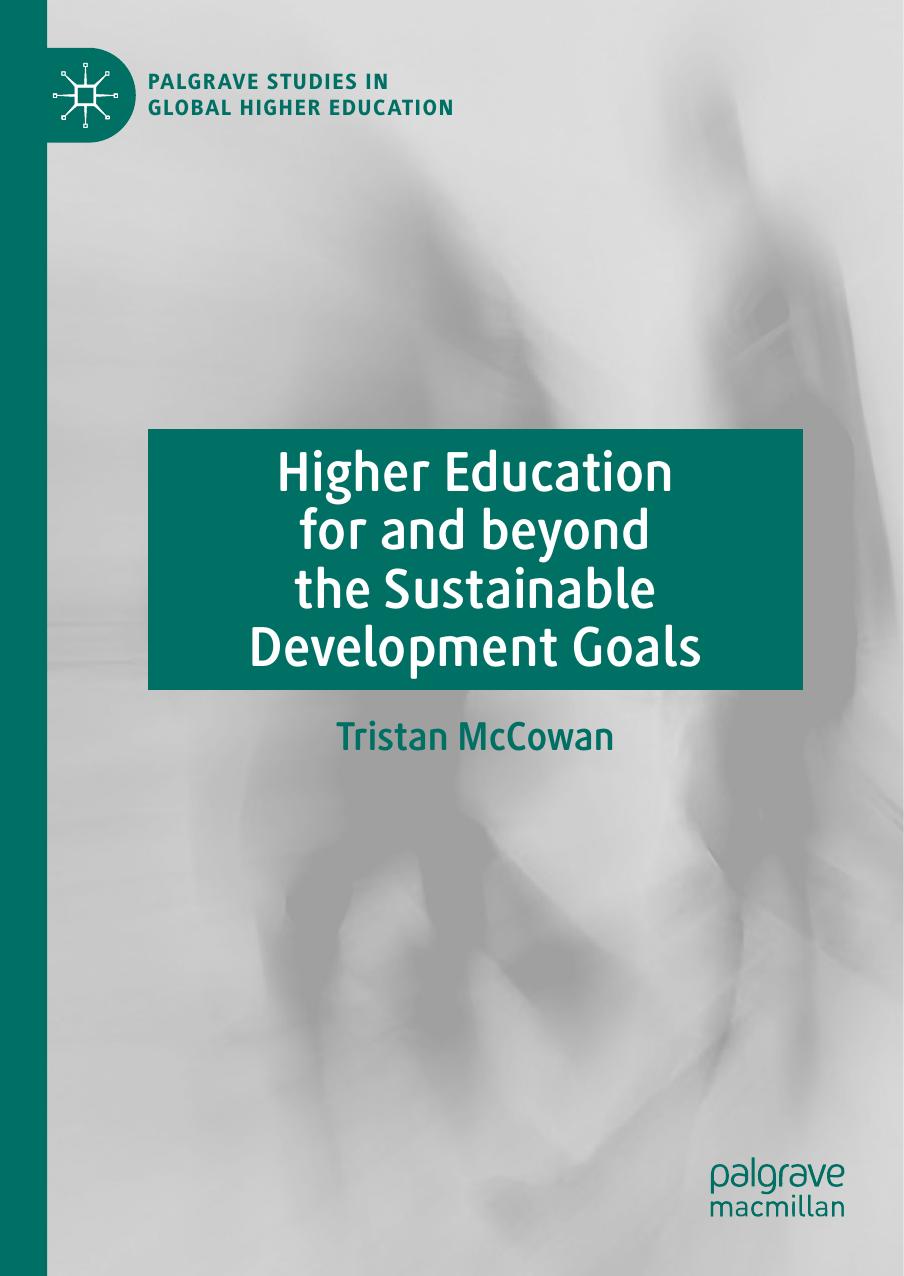Higher Education for and beyond the Sustainable Development Goals by Tristan McCowan

Author:Tristan McCowan
Language: eng
Format: epub, pdf
ISBN: 9783030195977
Publisher: Springer International Publishing
On the other hand, the exceptional version requires a hierarchy between institutions, with not all universities able to be good at the same time. This hierarchy may be based on objective or purportedly objective criteria, or it may be instinctive, apodictic or self-evident.
Barnett (1992) in this way provides a distinction between objectivist and relativist positions on quality. These differences imply hierarchical or parallel conceptions, having a necessary ordering in the case of the former, with only some obtaining the ‘gold standard’, but in the latter the possibility of multiple valid forms. But he also adds a third, ‘developmental’, relating to ongoing enhancement of quality through self-assessment—corresponding to ‘quality improvement’ rather than ‘quality assurance ’.
As is often the case in educational matters, it is hard to disentangle questions of quality from those of equality . The question arises of quality for whom: as seen in the previous chapter, most contemporary education systems display markedly stratified opportunities, with high-quality learning experiences to a large extent restricted to the more privileged. Even within particular institutions, gender , social class , regional background and other factors play a part in diminishing the quality of students’ experiences (as shown in detail in Morley and Lugg’s [2009] research on higher education in Tanzania and Ghana ).
How does quality relate to the frame of value, function and interaction outlined in Chapter 3? What we think of as quality is relational to the particular value held by an institution. Gauges of quality are normally applied to the effectiveness of functions, and sometimes interactions. But what qualifies as a valid function, and indeed effectiveness, is determined by value. So, for example, for an institution holding to the intrinsic value of knowledge production through advances in basic science and scholarly writing, it will be coherent to gauge its quality through its publications in high-level journals. If the fundamental value of the university is its instrumental contribution to reducing poverty in surrounding communities, then these gauges will be largely irrelevant, and instead it will need to look to evaluate its community engagement programmes, applied research and so forth.
For the developmental university , one that is aligned to the achievement of the SDGs, quality would in this way reside in the effectiveness of the institution in fulfilling its instrumental aims: promoting inclusive growth, addressing developmental challenges, strengthening public services such as education and health , and building robust and democratic institutions. The ultimate gauges of quality, therefore, are those of impact . It may then appear rather artificial to distinguish quality from impact (discussed in the following chapter): in an entirely instrumental institution they are inextricably linked. Bearing in mind the ultimately porous boundary between them, this chapter will focus more on the internal workings of quality—the functioning of the institution—while the next chapter will focus on external impact —the imprint of the institution on the outside society.
To what extent does quality in the developmental model corresponds to a hierarchical or a parallel conception (Barnett 1992)? While the developmental university in no
Download
Higher Education for and beyond the Sustainable Development Goals by Tristan McCowan.pdf
This site does not store any files on its server. We only index and link to content provided by other sites. Please contact the content providers to delete copyright contents if any and email us, we'll remove relevant links or contents immediately.
| Administration | Assessment |
| Educational Psychology | Experimental Methods |
| History | Language Experience Approach |
| Philosophy & Social Aspects | Reform & Policy |
| Research |
The Art of Coaching Workbook by Elena Aguilar(48426)
Trainspotting by Irvine Welsh(20119)
Twilight of the Idols With the Antichrist and Ecce Homo by Friedrich Nietzsche(17738)
Fangirl by Rainbow Rowell(7874)
Periodization Training for Sports by Tudor Bompa(7361)
Change Your Questions, Change Your Life by Marilee Adams(6687)
This Is How You Lose Her by Junot Diaz(5830)
Grit by Angela Duckworth(4761)
Red Sparrow by Jason Matthews(4720)
Asking the Right Questions: A Guide to Critical Thinking by M. Neil Browne & Stuart M. Keeley(4628)
Paper Towns by Green John(4193)
Room 212 by Kate Stewart(4138)
Ken Follett - World without end by Ken Follett(3993)
The Sports Rules Book by Human Kinetics(3616)
Housekeeping by Marilynne Robinson(3443)
The Motorcycle Diaries by Ernesto Che Guevara(3364)
Exercise Technique Manual for Resistance Training by National Strength & Conditioning Association(3319)
Introduction to Kinesiology by Shirl J. Hoffman(3318)
Double Down (Diary of a Wimpy Kid Book 11) by Jeff Kinney(3303)
